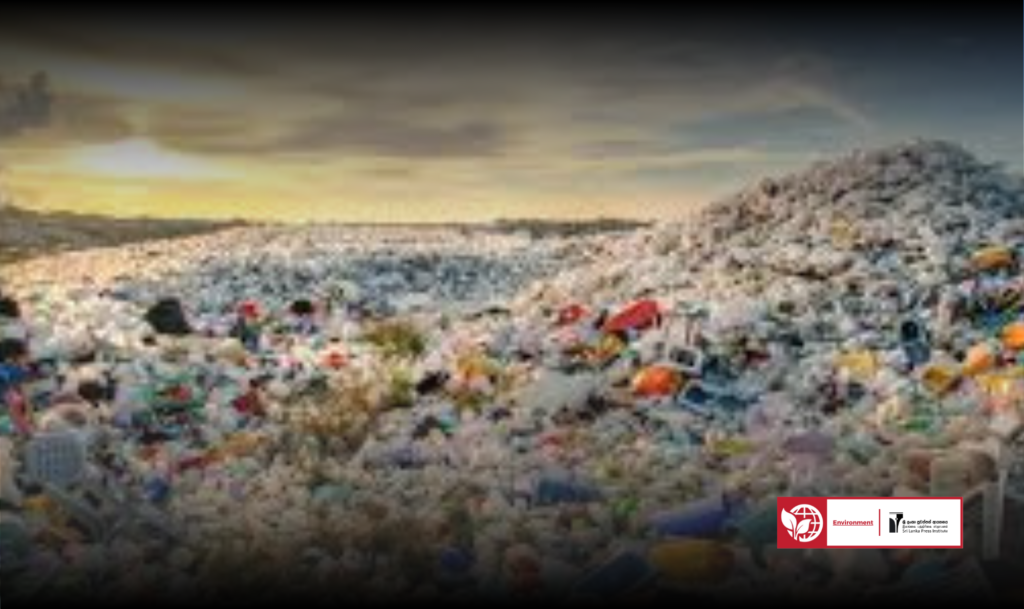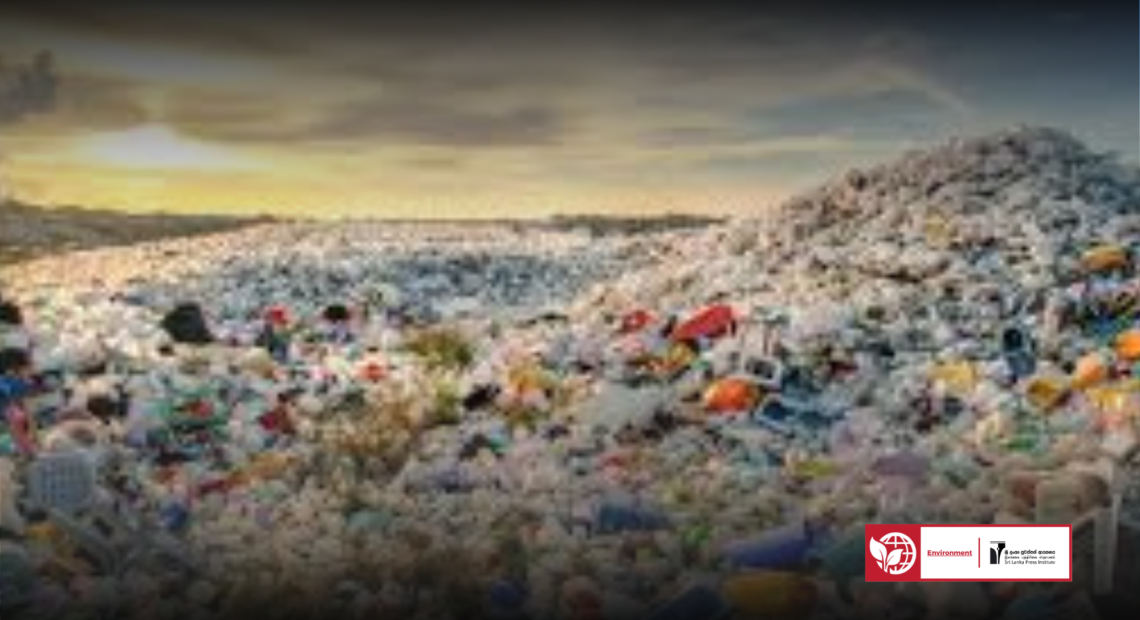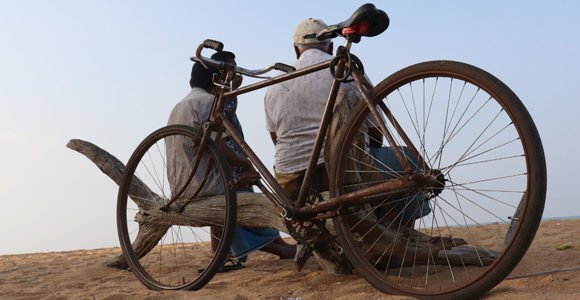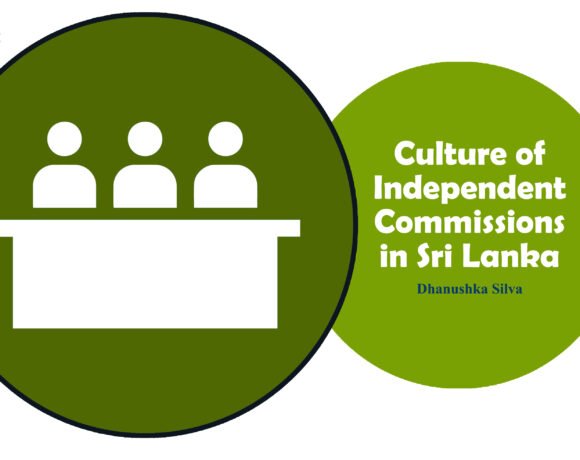By Jude Roshan Muthukuda
In the past, villagers would leave a portion of their harvest for the birds. However, in the present, the bond between humans and the environment has broken. With global development, humans have begun encroaching on nature.

Decades ago, people carried woven bags or cane baskets to markets, unlike the shopping bags of today. Groceries such as sugar and flour were often packed in old newspapers, and rice was carried in popular cement bags. At butcher shops and fish markets, items were wrapped in teak leaves. By the late 1970s, with the introduction of an open economy, the spread of plastic and shopping bags began. The advent of supermarket culture further accustomed Sri Lankans to excessive use of plastic, which they now dispose of irresponsibly into the environment.
Improper disposal of plastic has led to numerous environmental and health issues. While some may describe plastic as a problem for Sri Lanka, it has grown into a full-blown crisis.
Today, the overuse of plastic has become not just a problem but a crisis for Sri Lanka as well as the entire world. Globally, around 400 million tons of plastic waste are produced annually, and it is estimated that this will increase to 1,100 million tons by 2080. Within Sri Lanka, 938 metric tons of plastic waste are generated daily. Of this, only 300 metric tons (32%) are collected by local authorities, while 638 metric tons go uncollected.
From this uncollected waste, 261 metric tons are disposed of in open dumps, 139 metric tons are improperly disposed of privately, 8 metric tons end up in water bodies, and 419 metric tons are openly burned. Additionally, around 18 million lunch sheets and 10 million shopping bags are released into the environment daily, along with approximately 45 million yogurt cups monthly.
According to the National Plan for Plastic Waste Management (2024-2030), plastic and polythene are identified as leading contributors to environmental pollution due to human activities. Currently, plastic and polythene have become the primary environmental threats in Sri Lanka.
Owing to its lightweight nature, durability, low cost, and ease of handling, plastic has become a popular consumer material in Sri Lankan society. Daily, Sri Lanka generates between 900 and 950 metric tons of plastic waste, of which only 300 to 350 metric tons are collected. From the collected waste, only 40 to 50 metric tons are recycled. This highlights that over 80% of the daily generated plastic waste in the country is improperly released into the environment.
This situation is detrimental to the country in every possible way, especially as Sri Lanka is a nation rich in natural beauty. The plastic crisis not only deteriorates the quality of terrestrial habitats and destroys the scenic beauty of the country but also obstructs natural waterways. The long-term persistence of plastic leads to severe consequences, including the release of toxic chemicals from degraded plastics into the soil, which can contaminate drinking water and water used for agriculture.
Sri Lanka is globally renowned for its natural beauty and biodiversity, attracting numerous local and international tourists. However, plastic, as a major environmental pollutant, has significantly harmed the physical environment. Rivers, canals, and inland water systems like tanks and ponds, as well as the coastal belt and surrounding seas, are increasingly polluted by plastic and polythene. This issue has become an open secret.
Improperly discarded plastic and polythene waste within the country enter rivers and streams, eventually making their way into the ocean and washing up on Sri Lanka’s once-pristine shores. Moreover, vessels passing through Sri Lanka’s nearby sea routes discharge various plastic waste into the deep sea. Ocean currents then carry this waste to the coastal areas, further contaminating the nation’s beaches.
Plastic waste from countries like India, Myanmar, Thailand, and Bangladesh enters Sri Lanka’s coastal regions through the ocean. Not only the ocean but also a significant portion of Sri Lanka’s wetlands and land areas are now invaded by plastic waste. Currently, there are 349 identified open dumping sites across the country. Studies reveal that more than 50% of the different types of plastics commonly used in Sri Lanka are irresponsibly disposed of in these sites. Research also shows that plastic takes over 500 years to degrade naturally.
When considering environmental pollution caused by humans, the impact of plastic on the environment ranks at an alarmingly high level. The widespread use of plastic is driven by its profitability, ease of accessibility, transportability, durability, and the convenience of disposal. Furthermore, the burning of plastic contributes to air pollution. Toxic gases such as dioxins and furans, which are harmful to human health, are released into the atmosphere during combustion, leading to severe atmospheric contamination.
Different types of plastics that accumulate in the environment often break down into smaller fragments due to environmental or human activities. Plastics larger than 5 millimeters are classified as primary microplastics during production, while synthetic fibers used in textile manufacturing significantly contribute to environmental plastic waste. The textile industry releases secondary microplastics into the environment. Plastic particles smaller than 1 micrometer are referred to as nano plastics
The production of plastics, including processes such as breaking them into smaller fragments and adding color, releases harmful chemicals into the environment, causing severe pollution. Chemicals are added to plastics to achieve properties like transparency, heat resistance, and malleability. These added chemicals often include carcinogens and heavy metals, posing serious risks to all life forms. Improper disposal of plastic waste results in toxic chemicals leaching into groundwater and soil, disrupting ecosystems and affecting living organisms.
Plastic waste disposed of near human settlements and even in wildlife areas, such as near national parks, creates further issues. Elephants and other wildlife searching for food often consume discarded plastics, introducing microplastics into their systems through ingestion. This results in frequent deaths, which are widely reported in the media.
Additionally, improper disposal of plastic waste clogs drainage systems and waterways, leading to waterlogging during the rainy season. This obstructs water flow, causing river overflows and floods, which heighten the risk of waterborne diseases.
Plastic waste also poses a severe threat to aquatic and terrestrial organisms. Aquatic birds and amphibians, for instance, ingest microplastics, which then enter food chains, affecting marine and land-based species. Mangrove ecosystems, which play a crucial role in maintaining ecological balance and supporting Sri Lanka’s biodiversity, are also severely impacted. Plastics, polythene, discarded fishing nets, and nylon ropes often become entangled in the roots of mangrove plants, threatening their survival. This endangers the mangrove systems, which are vital breeding grounds for fish and integral to the country’s biodiversity.
The damage caused by plastics and polythene to Sri Lanka’s mangroves and aquatic ecosystems is a grave issue. It not only threatens the survival of marine species but also undermines the ecological integrity of vital habitats.
The plastic crisis poses a significant threat to human health as well. Chemicals such as BPA (Bisphenol A) and Polychlorinated Biphenyls (PCBs), commonly found in plastics, can leach into food and water supplies. When these contaminated sources are consumed, these toxic substances can interfere with the endocrine system, leading to hormonal imbalances. This can result in various health issues, including reproductive problems, hormonal disruptions, and an increased risk of cancers.
We must act immediately to minimize the damage caused by plastic pollution. The 3R principle—Reduce, Reuse, and Recycle—plays a crucial role in managing plastic waste. One of the primary actions we can take is to minimize the use of plastic items unless absolutely necessary. Additionally, opting for eco-friendly alternatives to plastic products is essential. When plastic products must be used, it is our responsibility to dispose of them properly, ensuring they are directed into recycling processes. Avoiding excessive consumption is an environmentally friendly practice.
To provide future generations with a clean environment, we must implement various methods to reduce waste generation. Consumers play a significant role in this effort. Changing consumer habits and attitudes is a key factor. By purchasing only what is necessary and avoiding wastage, individuals can contribute to reducing waste generation. Moreover, through the use of durable alternatives and proper mechanisms, we can minimize food packaging waste from purchasing to consumption.
Raising public awareness about the use of plastics and fostering an attitudinal change in society is the most critical measure to reduce the severe environmental harm caused by plastics. Awareness campaigns should target all levels of society, starting from schools. Initiatives such as the Central Environmental Authority’s (CEA) “Green Schools” program and the Sobha Dahara radio program are notable examples.
Additionally, the Central Environmental Authority’s efforts to introduce a new regulation under the National Environmental Act to minimize excessive plastic use in Sri Lanka should be commended. Under this regulation, plastic manufacturers and packaging producers are legally required to ensure their products are directed toward recycling. Furthermore, all industries related to plastic are encouraged to adopt environmentally friendly practices. The CEA has introduced measures to ensure industries receive environmental protection licenses only if they engage in eco-friendly production methods, motivating manufacturers to produce plastics responsibly.
We must remember that protecting the Earth from the pervasive plastic pollution threatening humanity and the entire ecosystem is a shared and significant responsibility entrusted to all of us.









